
|
<<Back |
Covered Bridges of
New England
Spring/Fall 2011 |

|
|
|
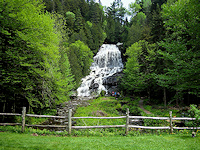
Beaver Brook Falls
|
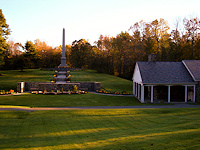
Mormon founder's birthsite
|
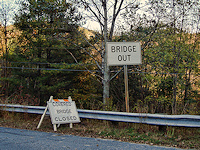
Effects of Irene
|
|
|
A
few years had passed since our excursions to see the
lighthouses of northern and southern New England.
We had found it to be a particularly
rewarding experience as it got us out of the house
(and from underneath our laptops) to see some of
this part of the country that we wouldn’t normally
see. We were
getting the feeling that our days in New England
were numbered, and we wanted to create a similar
photo essay that would help us get to know the
interior of New England. We thought about some potential subjects such
as the beautiful old churches that could be found in
almost any small town, the quaint drystone walls
that crisscrossed the countryside, and even the
iconic brick mill buildings that were so much a part
of this region’s history. But in the end, we went with the obvious
choice – covered bridges.
It
is generally accepted that covered bridges exist because
protecting the framework from the elements by adding a roof
could greatly extend the life of the bridge. Initially, the Kingpost and Queenpost truss systems
used were based on European designs which extended bridges
to 100 feet. However,
the need to span greater distances resulted in the
development of new American designs such as the Burr Arch
and Town Lattice trusses which doubled the length of bridge
spans between supports. The longest covered bridge in the country, the 450
foot Cornish-Windsor, was built using the Town Lattice
design in 1866 and appropriately links New Hampshire with
Vermont across the Connecticut River.
New
England was once home to more than 1,000 covered bridges,
but fewer than 200 have survived. Three quarters of those are in Vermont and New
Hampshire. Sadly,
even in the time we were on our quest to see some of these
bridges, the number declined again. In the intervening summer between our visits to New
Hampshire and Vermont, Hurricane Irene devastated the area
and washed away several historic bridges such as the one in
Bartonville with the subsequent flooding.
|
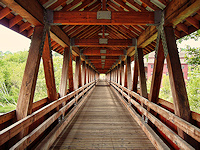
Kingpost
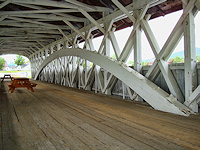
Burr Arch

Town Lattice
|
|
|
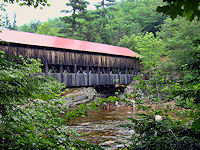
Albany Bridge
|
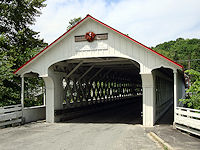
Ashuelot Bridge
|
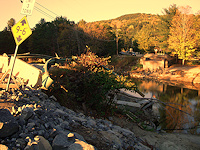
Bartonsville Bridge
|
|
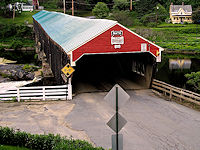
Bath Bridge
|

Bement Bridge
|

Blacksmith Shop Bridge
|
|
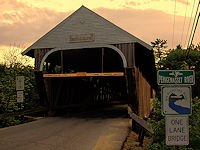
Blair Bridge
|

Blow Me Down Bridge
|
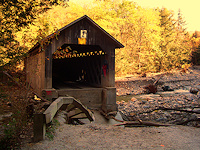
Brown Bridge
|
|
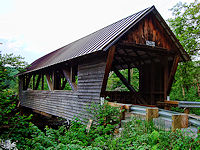
Bump Bridge
|
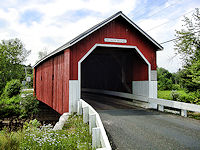
Carlton Bridge
|
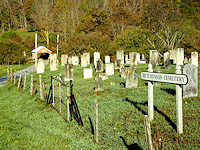
Cilley Bridge
|
|
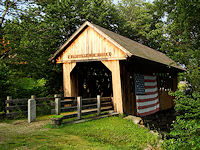
Cilleyville Bridge
|

Clark Rail Bridge
|
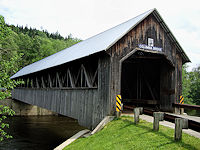
Columbia Bridge
|
|
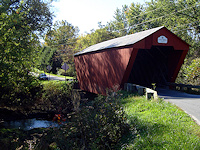
Cooley Bridge
|
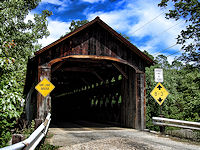
Coombs Bridge
|
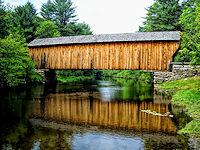
Corbin Bridge
|
|
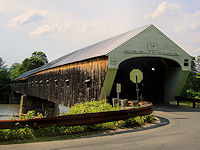
Cornish Windsor Bridge
|
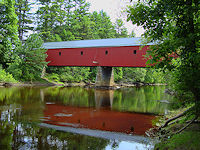
Cresson Bridge
|
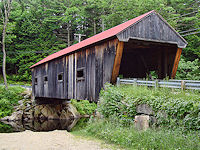
Dalton Bridge
|
|

Depot Bridge
|
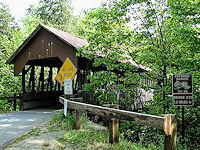
Dingleton Bridge
|
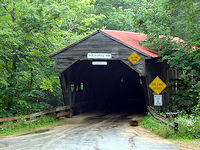
Durgin Bridge
|
|
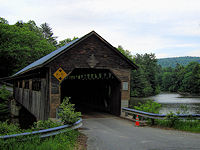
Edgell Bridge
|
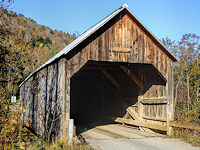
Flint Bridge
|
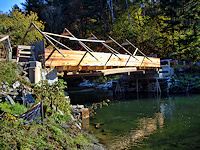
Gifford Bridge
|
|
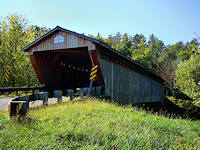
Gorham Bridge
|
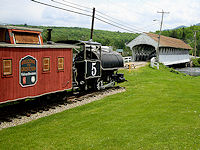
Groveton Bridge
|

Hammond Bridge
|
|
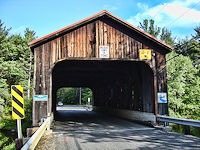
Hancock Greenfield Bridge
|

Happy Corner Bridge
|
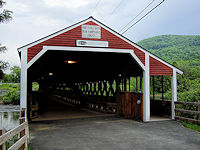
Haverhill Bath Bridge
|
|
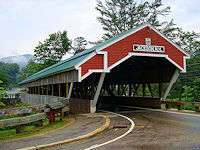
Honeymoon Bridge
|
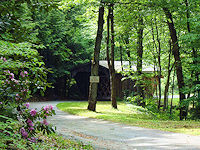
Horton Bridge
|

Howe Bridge
|
|
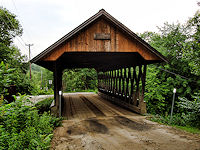
Keniston Bridge
|
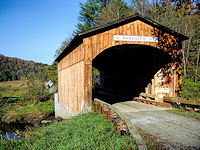
Kingsbury Bridge
|
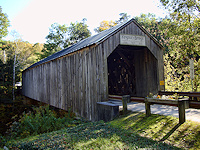
Kingsley Bridge
|
|

Larkin Bridge
|
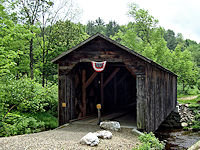
McDermott Bridge.
|
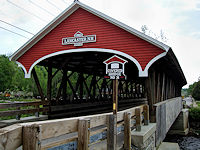
Mechanic Street Bridge
|
|

Meriden Bridge
|
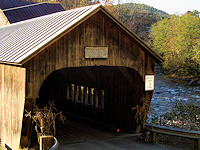
Mill Bridge
|
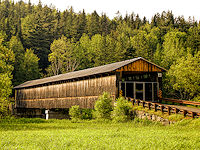
Mount Orne Bridge
|
|

Moxley Bridge
|
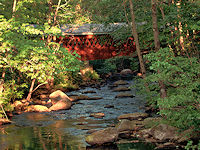
Nissitissit Bridge
|
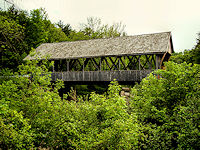
Packard Hill Bridge
|
|
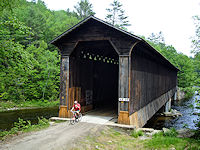
Pier Bridge
|
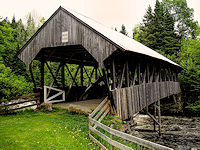
Pittsburg Clarksville Bridge
|

Prentiss Bridge
|
|
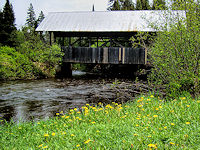
River Road Bridge
|
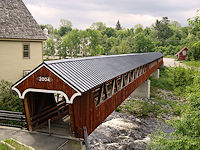
Riverwalk Bridge
|
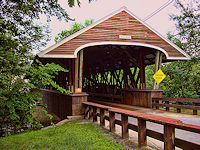
Rowel Bridgel
|
|

Saco River Bridge
|
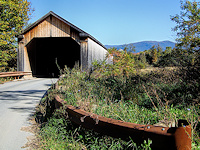
Sanderson Bridge
|
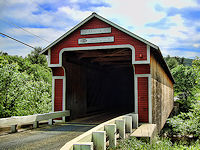
Slate Bridge
|
|
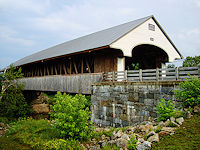
Smith Bridge
|

Stark Bridge
|
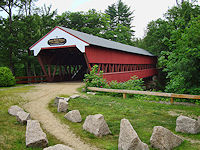
Swift River Bridge
|
|
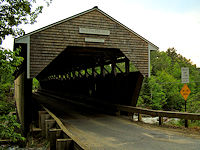
Swiftwater Bridge
|
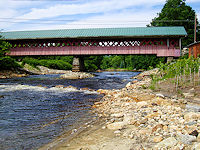
Thompson Bridge
|
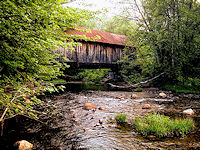
Turkey Jim Bridge
|
|
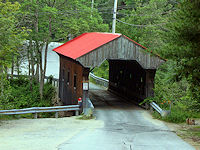
Waterloo Bridge
|

Worrall Bridge
|

Wright Rail Bridge
|
|
Copyright © 2005 JnDsTravelog.com. All rights reserved. |